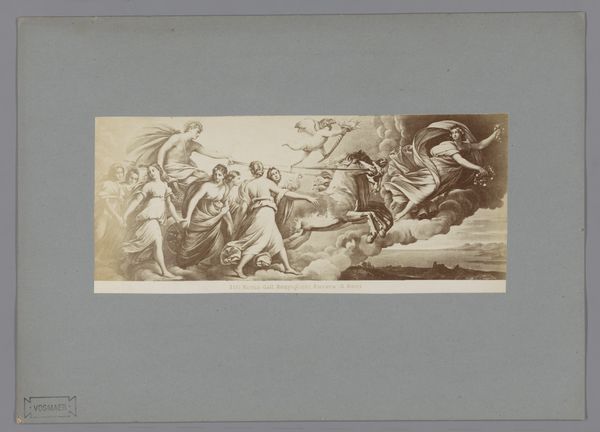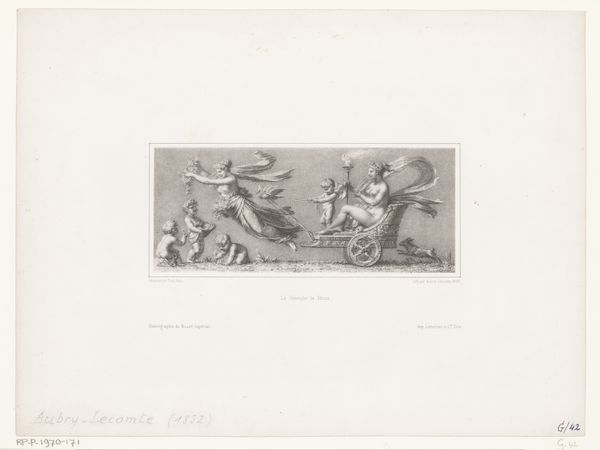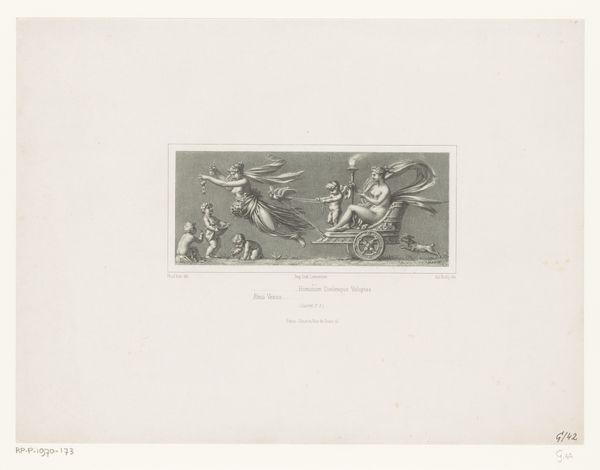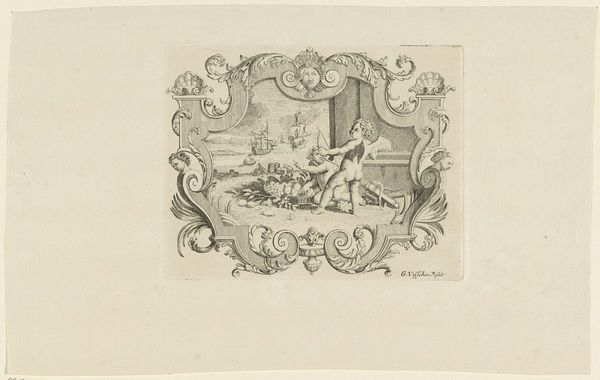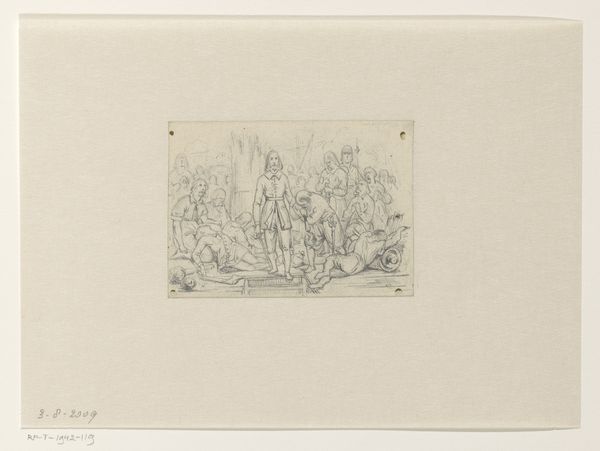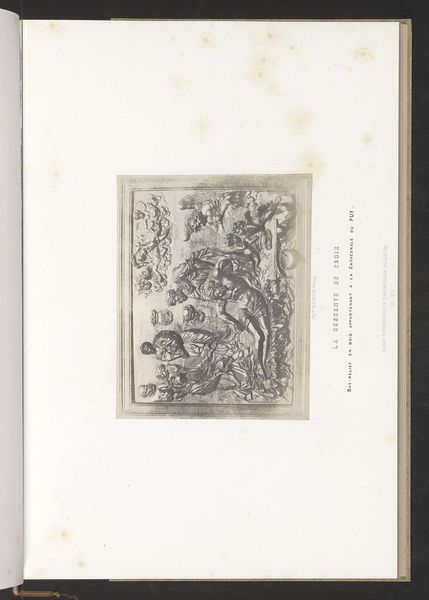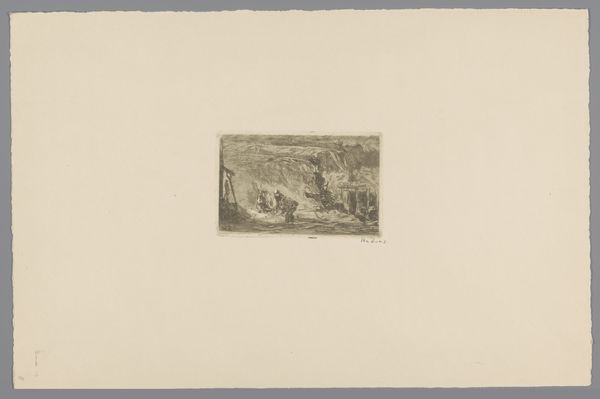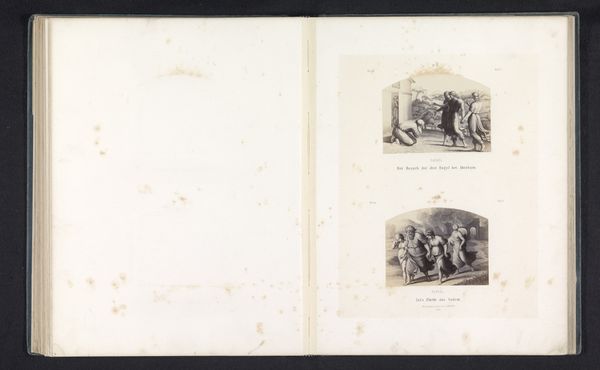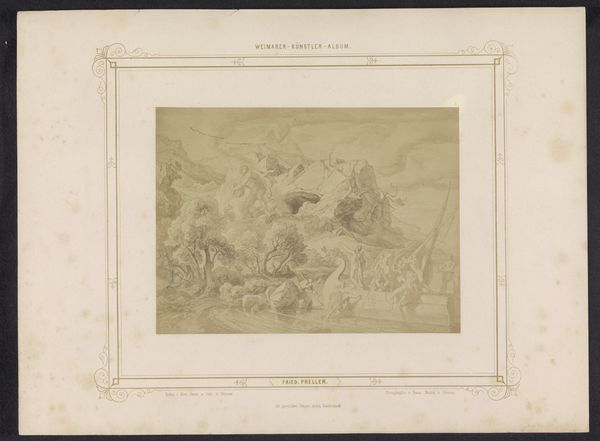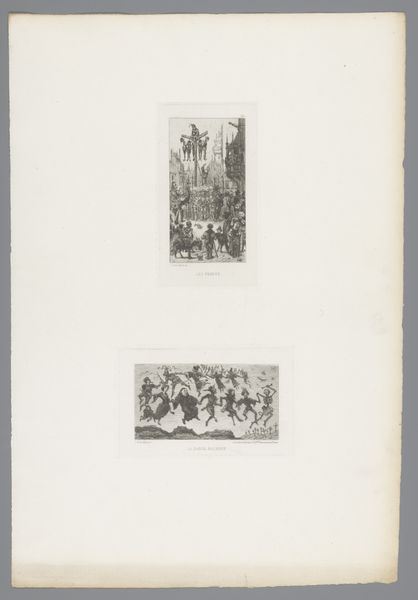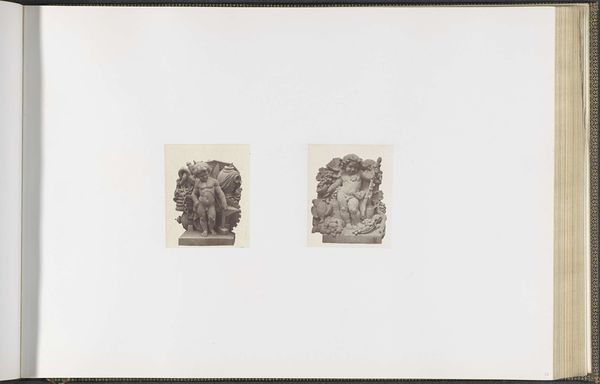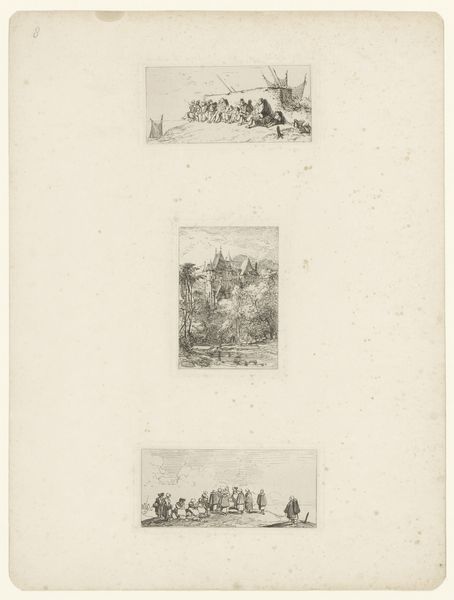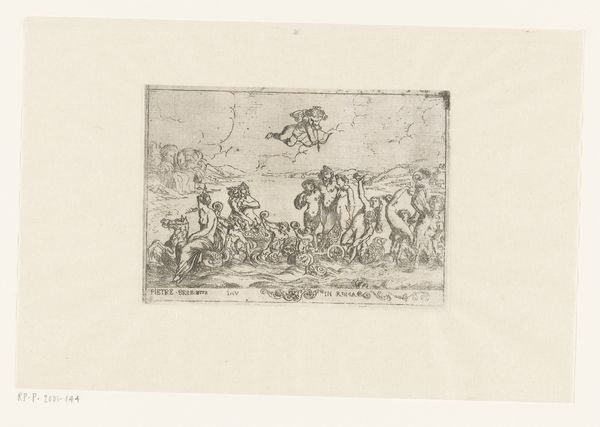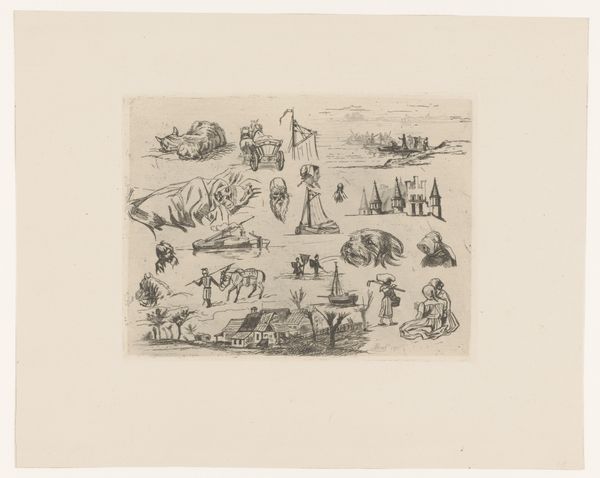
Dimensions: height 267 mm, width 346 mm, height 161 mm, width 169 mm
Copyright: Rijks Museum: Open Domain
Editor: This is "Ornamenten met muziekinstrumenten," an anonymous print and photograph from between 1860 and 1900. It features these three frieze-like depictions of musical instruments and foliage. It feels so formal, almost oppressively so. What do you see in this piece? Curator: The rigid formality you observe speaks volumes. Let’s consider the period: the late 19th century. Neoclassicism was en vogue, a style favored by the elite, reinforcing specific power structures. What do you think musical instruments symbolize within this context? Editor: Maybe social harmony? Refined taste? Curator: Precisely. But let's push further. Who had access to these instruments, to this "harmony?" Consider the rigid social stratification, the colonial exploits funding this aesthetic... Do the instruments, juxtaposed with those rigid geometric forms, now suggest something different? Editor: I see what you mean. The "harmony" becomes a symbol of exclusion, a performance of wealth and privilege built on exploitation. Curator: Exactly. This image, then, becomes more than decorative. It's a document, revealing the values and inequalities inherent in the era's power dynamics. Even the photographic process at that time—expensive and requiring particular expertise—reflects who could create and control representation. How does that understanding shift your initial perception of its formality? Editor: It's not just formal; it's actively reinforcing a specific worldview. It's beautiful, yes, but that beauty is built on something quite ugly. I hadn't considered how the social context affected my appreciation of this piece. Curator: It's through that lens that we understand art's complex relationship to power, and how these silent "ornaments" can speak volumes about history and oppression.
Comments
No comments
Be the first to comment and join the conversation on the ultimate creative platform.
